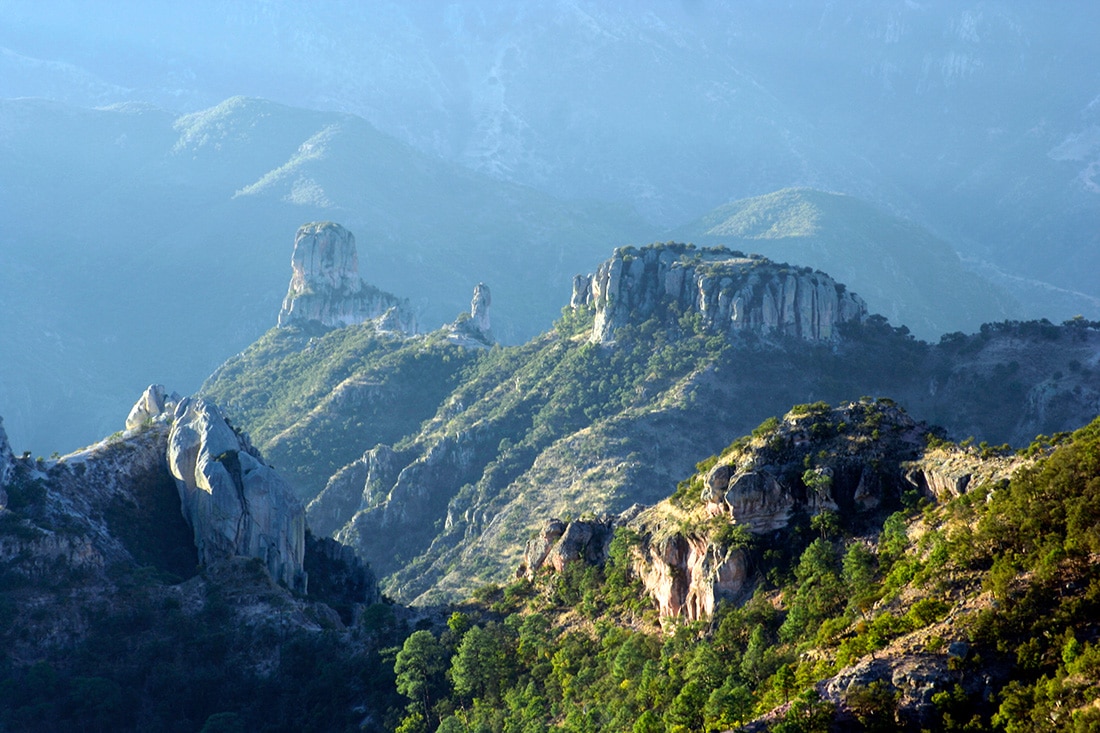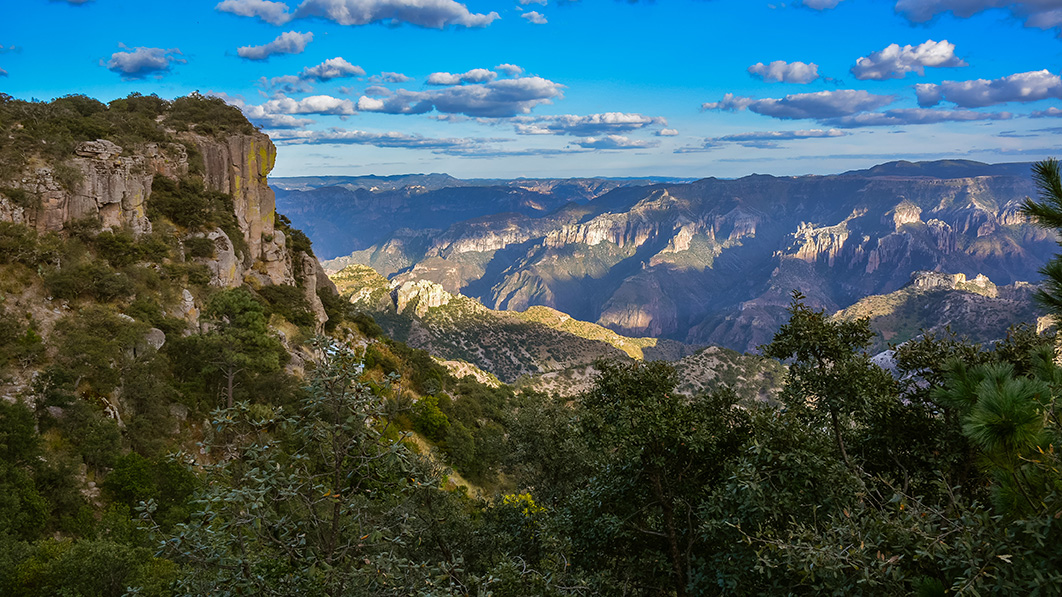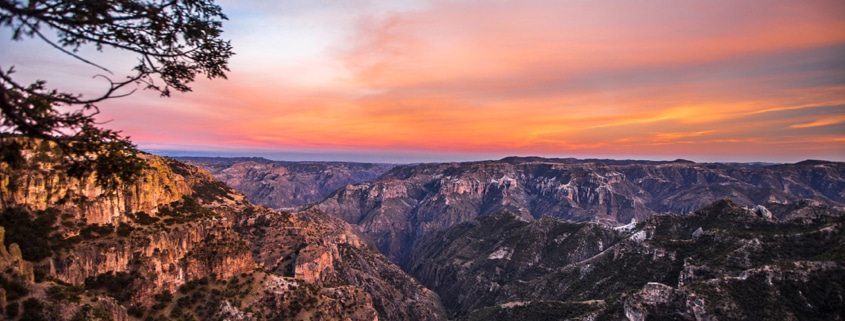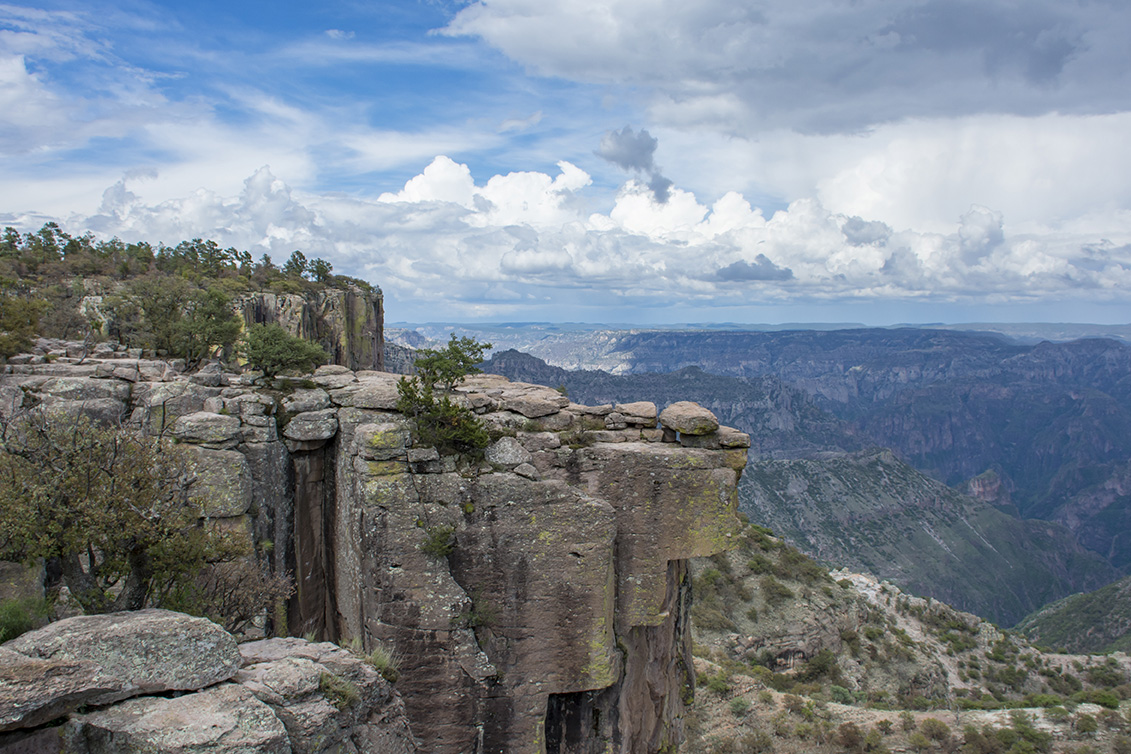12 Fun Facts About Copper Canyon
Copper Canyon is one of the most unique places on Earth. It’s a sprawling, interconnected series of six canyons in the Sierra Madre mountains in Chihuahua, Mexico. Its geography is unusual: its peaks maintain a mountainous, seasonal alpine climate, while its valleys stay sub-tropical and warm year-round.
This rare climate lays the groundwork for the extraordinary diversity of wildlife, culture, and history Copper Canyon holds. Here are a few facts worth knowing about one of the most beautiful regions in Mexico.
1. Explosive Volcanoes Forged The Six Canyons of Copper Canyon 40 Million Years Ago
Visitors often wonder, “How was Copper Canyon formed?” The answer is intriguing!
Copper Canyon was formed about 40 million years ago in the Western Sierra Madre mountains, encompassing Sierra Tarahumara. That entire region lay within the Sierra Madre Occidental volcanic field, a chain of volcanoes that were, at the time, highly active and reactive. Tectonic plates were also shifting.
Ultimately, shifting faults led six rivers to flow in a specific direction, eroding the ground and creating the six canyons over time. The process was hastened by volcanic activity: flows of ash and lahars (hot mudflows with sharp volcanic debris) carved Copper Canyon far faster than erosion would alone.
After this rush of activity, Copper Canyon and its rivers remained largely stable for the next several million years.
2. The Name “Copper Canyon” Comes From The Copper-Green Hue of the Canyon Walls
Where did Copper Canyon get its name? The Spanish named the six-canyon region “Barranca del Cobre” or “Copper Canyon” when they first encountered it in the 17th century. They named it for its colors, which are reddish brown and copper-green.
3. Copper Has Never Been Mined There, But Silver Has
Despite its name, Copper Canyon was once best known as a repository of natural silver, not copper. The Spanish began mining Copper Canyon for silver in 1632. In 1861, the region experienced a huge “silver rush,” with many newcomers funded by American investors hoping to strike it rich in the mines.
The silver bonanza lasted until the mines began running low in 1906, then ended permanently with the Mexican Revolution of 1910. Though the silver mines eventually closed, the boom era completely transformed towns like Batopilas.

4. Copper Canyon Is Over A Mile Deep (6,136 Feet)
How deep is Copper Canyon? It’s the deepest canyon in Mexico.
The deepest point in the Copper Canyon system is the bottom of Urique Canyon, 6,136 feet deep below the canyon’s rim. The average depth of the canyon system ranges from 3,300 ft to 4,600 ft down from its plateau.
5. The Copper Canyon System Spans 25,000 Square Miles
Visitors often wonder, “How big is Copper Canyon?” In terms of its ground, Copper Canyon covers 25,000 square miles of land.
Most of the Copper Canyon system’s plateaus rest 7,200 ft. – 7,800 ft. above sea level. Its highest point reaches an elevation of 8,300 ft.
6. Copper Canyon’s Indigenous Rarámuri Are The World’s Fastest Distance Runners
The Rarámuri are the cultural group indigenous to Copper Canyon, and they’re recognized worldwide for their extraordinary skill in long-distance running. In Rarámuri culture, foot racing is a celebrated community event—an event that’s highly competitive.
A disproportionately high percentage of ultramarathon world records are held by Rarámuri runners. Recently, a Rarámuri runner named María Lorena Ramírez Hernández made headlines for dominating a 50km trail run marathon—while wearing a skirt and Huaraches.
7. Waters Plunge 1,485 Ft Over Copper Canyon’s Piedra Volada: Mexico’s Tallest Waterfall
Copper Canyon is the site of several breathtaking waterfalls, including Cascada Basaseachi and Cusarare Falls. The grandest is Piedra Volada. It’s over 1,400 feet tall, and it carries an extraordinary volume of water during the rainy season.
8. Over 1300 Animal Species Live In Copper Canyon, a “Biodiversity Hotspot”
Conservation researchers call the Sierra Tarahumara region of Copper Canyon a “biodiversity hotspot.” Sierra Tarahumara is a roughly 3,000,000-acre expanse targeted for preservation, due to its high density of biodiversity.
Researchers believe 3,271 distinct species of plants, and 1,301 animal species, make their home in Sierra Tarahumara’s 4,700 sq. mile radius. This includes hundreds of endangered species, like the Mexican Gray Wolf.
9. Copper Canyon’s “Monk Statues” Are Natural Formations of Ancient Volcanic Ash Flows
One of the strangest sites in Copper Canyon is the Valley of the Monks. This section of the canyon is filled with tall, strange formations of volcanic rock.
While the formations are wholly natural, they look eerily like giant statues of stoic people—complete with serious, expressive faces. Most who see the formations say they look like mythical gods, or perhaps monks, giving the valley its name.
10. Copper Canyon’s Hot Springs Are Warmed By Magma That “Cooled” 5 Million Years Ago
There are several hot springs (and slightly-cooler “warm springs”) in the Copper Canyon system. The most popular include the Basirecota hot springs, the Owerabo hot springs, El Pandeño, Ojo de Dolores, La Cueva del Diablo, and the Recowata Springs.
Unlike the geyser at Yellowstone, these springs aren’t warmed by subterranean magma flows. Instead, the source of heat is igneous rocks: blocks of lava that have cooled and solidified, yet even in their cooler state retain incredible heat.

11. Copper Canyon Is Home To Four Pueblos Mágicos: Unique Towns With “Magical” Character
At the start of the 21st century, Mexico’s Ministry of Culture launched Programa Pueblos Mágicos, or the “Magical Towns Program,” an initiative highlighting the beauty and cultural richness of unique, oft-overlooked small towns.
Towns are chosen when their community’s culture, traditions, craftsmanship, or festivals have a truly unique, magical spirit. A Pueblo Mágico must have something visitors truly won’t find anywhere else—not even in the next town over.
Currently, four towns of Copper Canyon have earned the Pueblo Mágico designation:
- Batopilas, for its flourishing blend of Rarámuri, Tepehuán, and Spanish traditional arts, and its unique cultural events like the Festival of the Sierra Tarahumara.
- Creel, for its unique natural landscape, thriving Rarámuri culture, and Sacred Art Museum.
- Casas Grandes (Paquimé), for its preservation of a rare archaeological site of the prehistoric Mogollon culture
- Guachochi, for its preservation of the traditional Rarámuri art of weaving, historic Jesuit missions, and the first Indigenous Center of Mexico’s National Institute of Indigenous Peoples.
12. Over Half Of The Iconic El Chepe Rail Line Runs Through Copper Canyon
The El Chepe Railway (also called the Ferrocarril Chihuahua al Pacífico) is a spectacular feat of engineering.
The rail was first conceptualized in the early 1860s as a means to connect Mexico’s central northwest to its Pacific Coast. Construction began in 1897, but solving the puzzle of engineering a stable, swift railroad across wildly diverse terrains was a challenge. The rail line was finally completed in 1961: a full century later.
Yet, building El Chepe was 100 years well-spent. Today, the train’s route through Copper Canyon is lauded as one of the most scenic rail experiences in the world.
Experience Copper Canyon, El Fuerte, And More On Caravan’s Copper Canyon Train Tour
Every Caravan Tour is designed to be completely stress-free for our guests. We take the work of travel planning off your place by curating expert-guided, all-inclusive tours of some of the most extraordinary destinations on Earth.
Our experts select and pre-book elegant transportation, overnight accommodations, meals, and activities. Then, we bundle them into an adventure-filled tour at a single, affordable rate.
If you want to experience the beauty of Mexico stress-free, join our Copper Canyon Tour.
Call our agents toll-free at 1-800-227-2826 to book your spot. Or, learn more by calling our information team at +1-312-321-9800.

